

TODAY YOU WILL:
- Sort out the planets of the solar system
- Study new vocabulary
- Compare the planets
- Use the degrees of comparison of adjectives

HOW MANY PLANETS ARE THERE IN THE SOLAR SYSTEM ?

LISTEN, LOOK AT THE PICTURES AND FOLLOW THE TEXT. EX 11 P 60

LOOK AT THE WORD CLOUD. FIND AND CIRCLE THREE PLANETS.

LOOK AT THE WORD CLOUD. FIND AND CIRCLE THREE PLANETS.

WHAT OTHER SPACE WORDS CAN YOU SEE IN THE WORD CLOUD?

MATCH THE WORDS FROM THE WORD CLOUD WITH THEIR MEANINGS.
1. surface
2. icecap
3. condition
4 space probe
5. suitable
6. Solar
- ледниковый покров
(на полюсах)
b ) космический зонд
c ) поверхность
d ) условие
e ) солнечный
f ) подходящий

ANSWERS:
1 (c)
2 (a)
3 (d)
4 (b)
5 (f)
6 (e)
surface – поверхность
icecap - ледниковый покров
condition – условие
space probe – космический зонд
suitable – подходящий
solar - космический

Степени сравнения прилагательных
Adjective
Comparativ е
close
big
far
small
hot
cold
Superlativ е
closer
bigger
further
smaller
hotter
colder
(the) closest
(the) biggest
(the) furthest
(the) smallest
(the) hottest
(the) coldest
.
1. Which planet is the furthest to the Earth?
… is the furthest planet to the Earth.
2. Which planet is the closest to the Sun?
… is the closest planet to the Sun.
3. Which planet is the smallest in the Solar System?
… is the smallest planet in the Solar System.
4. Which planet is the biggest in the Solar System?
… is the biggest planet in the Solar System.
Pluto
Mercury
Pluto
Jupite r

Compare:
Mercury Pluto
1. Which planet is closer to the Earth?
… is closer to the Earth than … .
2. Which planet is further to the Earth?
… is further to the Earth than … .
3. Which planet is bigger?
… is bigger than … .
4. Which planet is smaller?
… is smaller than …
Mercury
Pluto
Pluto
Mercury
Pluto
Mercury
Mercury
Pluto

FILL IN THE BLANKS WITH WORDS FROM THE TEXT.
- 1. The ______ is in the centre of our solar system.
- 2. Mercury is _______ to the Sun than the Earth.
- 3. The Earth is _________ from the Sun than Mercury.
- 4. Mars has __________ and volcanoes.
- 5. Space _________ take photos of different planets.

FILL IN THE BLANKS WITH WORDS FROM THE TEXT.
Sun
- 1. The ______ is in the centre of our solar system.
- 2. Mercury is _______ to the Sun than the Earth.
- 3. The Earth is _________ from the Sun than Mercury.
- 4. Mars has __________ and volcanoes.
- 5. Space _________ take photos of different planets.
closer
further
icecaps
probes

FILL IN THE BLANKS WITH WORDS FROM THE TEXT.
- 1. The Sun is in the centre of our solar system.
- 2. Mercury is closer to the Sun than the Earth.
- 3. The Earth is further from the Sun than Mercury.
- 4. Mars has icecaps and volcanoes.
- 5. Space probes take photos of different planets.
“ 5”
If you have 5 correct answers
“ 4”
If you have 4 correct answers

OUR SOLAR SYSTEM IS AN EXCITING PLACE

THE SUN IS A STAR AND IT IS FULL OF GAS. IT IS AT THE HEART OF OUR SOLAR SYSTEM.

THE SUN
the large bright object in the sky that gives us light and heat, and around which the Earth moves

THE EARTH IS CALLED AN OCEAN PLANET. IT IS THE ONLY PLANET IN THE SOLAR SYSTEM THAT HAS LIFE.

The EARTH
the planet that we live on:

VENUS HAS MORE VOLCANOES THAN ANY OTHER PLANET. IT’S CALLED THE EARTH'S EVIL TWIN.

READ THE DEFINITIONS AND TELL WHAT IS DESCRIBED IN THE PICTURE
- The hottest planet
- Volcanoes
- Named after the god of truth
VENUS

MERCURY IS CLOSEST TO THE SUN, SMALLER THAN THE EARTH AND A ROCKY PLANET.

READ THE DEFINITIONS AND TELL WHAT IS DESCRIBED IN THE PICTURE
- The smallest planet
- Hot during the day
- Cold at night
- The fastest planet
MERCURY

MARS IS CALLED “THE RED PLANET” BECAUSE IT LOOKS RED IN THE SKY FROM EARTH.

READ THE DEFINITIONS AND TELL WHAT IS DESCRIBED IN THE PICTURE
- The closest planet to the Earth
- The fourth planet
- The huge volcano
- Named for the god of war
MARS

SATURN HAS DUST AND ICE RINGS AROUND IT.
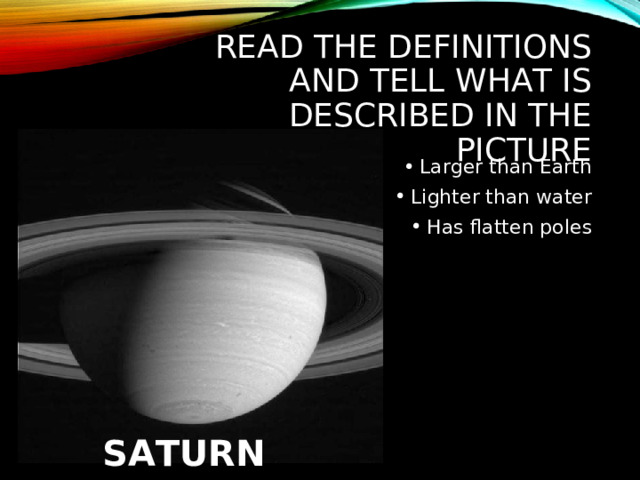
READ THE DEFINITIONS AND TELL WHAT IS DESCRIBED IN THE PICTURE
- Larger than Earth
- Lighter than water
- Has flatten poles
SATURN
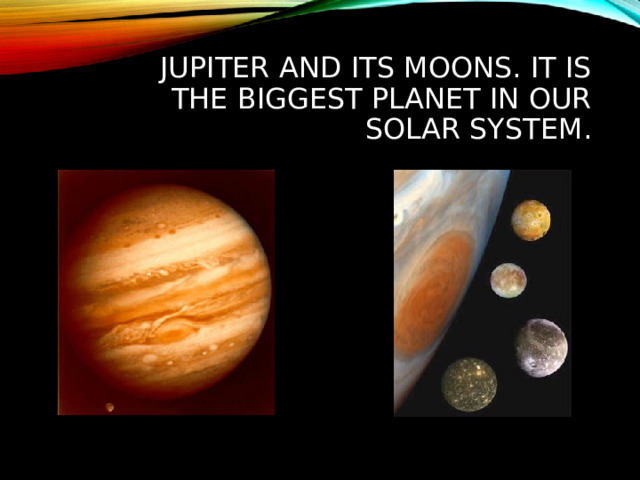
JUPITER AND ITS MOONS. IT IS THE BIGGEST PLANET IN OUR SOLAR SYSTEM.

READ THE DEFINITIONS AND TELL WHAT IS DESCRIBED IN THE PICTURE
- The largest planet
- Stormy
JUPITER

URANUS IS THE FURTHEST PLANET FROM THE EARTH AND THE FIRST TO BE DISCOVERED.
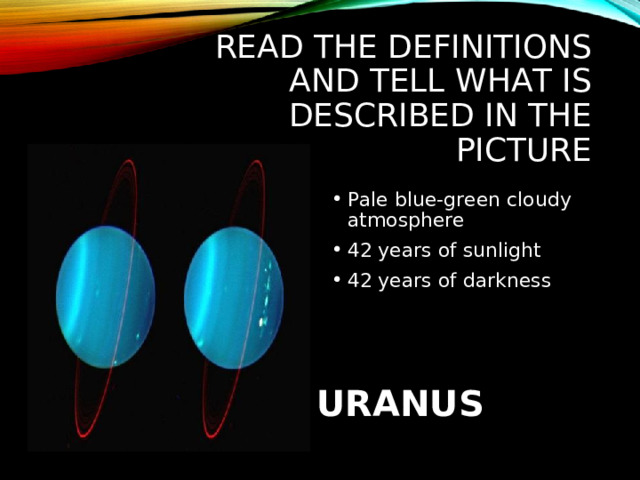
READ THE DEFINITIONS AND TELL WHAT IS DESCRIBED IN THE PICTURE
- Pale blue-green cloudy atmosphere
- 42 years of sunlight
- 42 years of darkness
URANUS

NEPTUNE. IT TAKES THE PLANET ABOUT 165 YEARS TO ORBIT THE SUN.
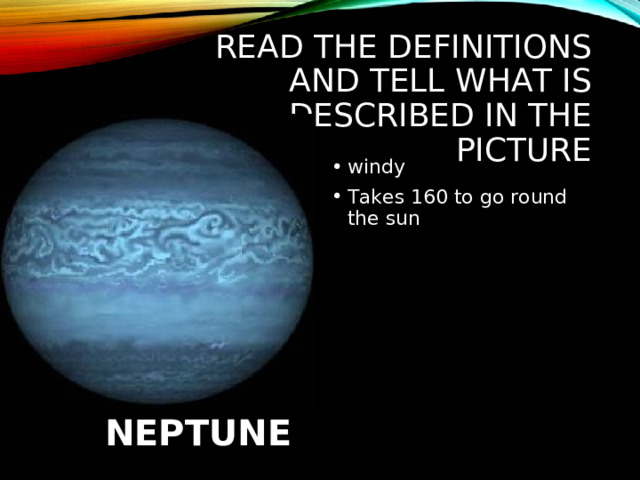
READ THE DEFINITIONS AND TELL WHAT IS DESCRIBED IN THE PICTURE
- windy
- Takes 160 to go round the sun
NEPTUNE
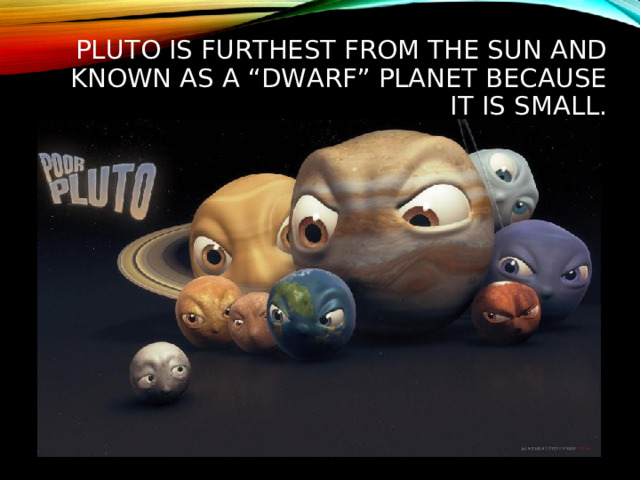
PLUTO IS FURTHEST FROM THE SUN AND KNOWN AS A “DWARF” PLANET BECAUSE IT IS SMALL.
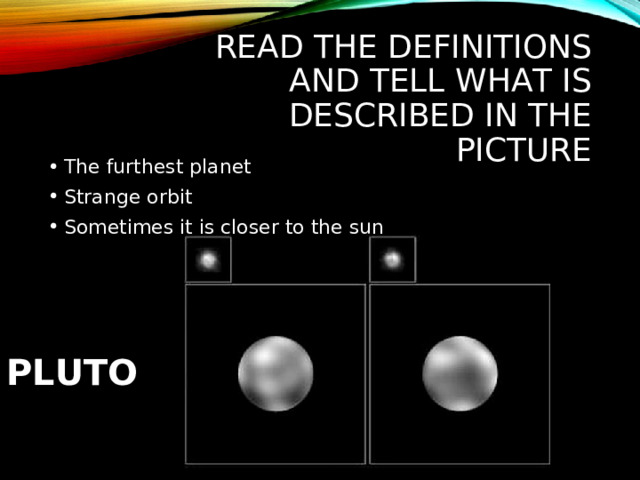
READ THE DEFINITIONS AND TELL WHAT IS DESCRIBED IN THE PICTURE
- The furthest planet
- Strange orbit
- Sometimes it is closer to the sun
PLUTO
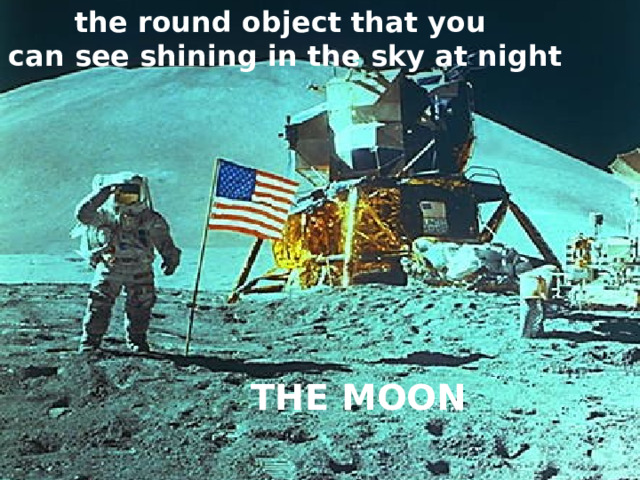
the round object that you
can see shining in the sky at night
THE MOON
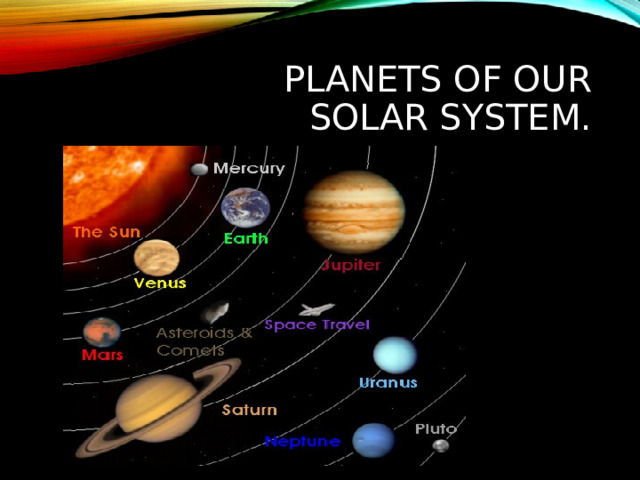
PLANETS OF OUR SOLAR SYSTEM.
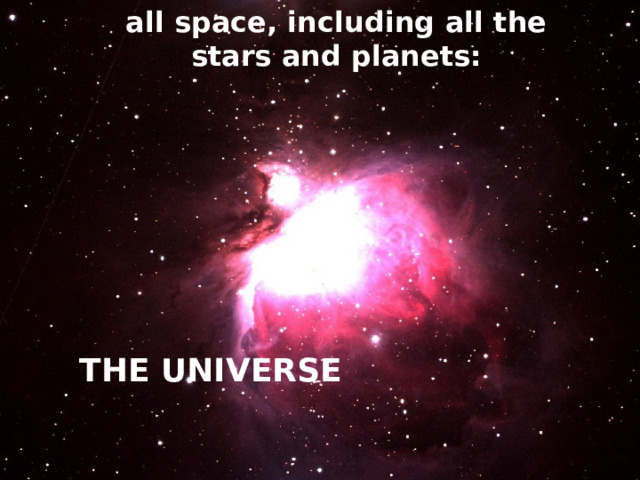
all space, including all the stars and planets:
THE UNIVERSE
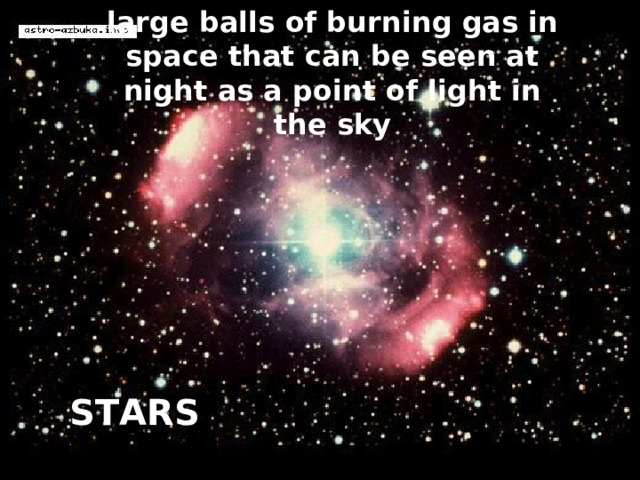
large balls of burning gas in space that can be seen at night as a point of light in the sky
STARS

A COMET
an object in space like a bright ball with a long tail, that moves around the sun:
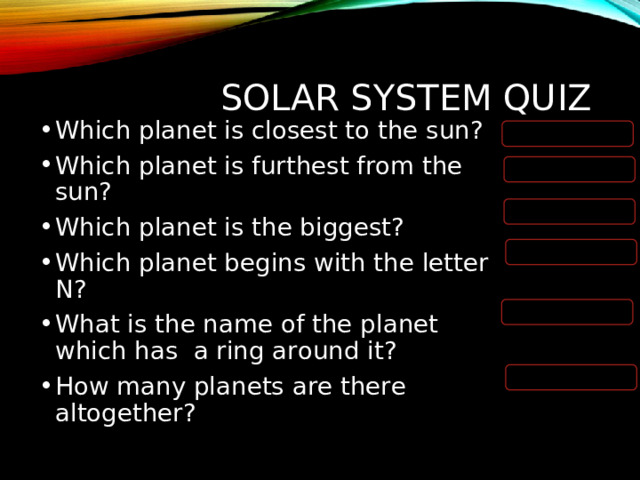
SOLAR SYSTEM QUIZ
- Which planet is closest to the sun?
- Which planet is furthest from the sun?
- Which planet is the biggest?
- Which planet begins with the letter N?
- What is the name of the planet which has a ring around it?
- How many planets are there altogether?
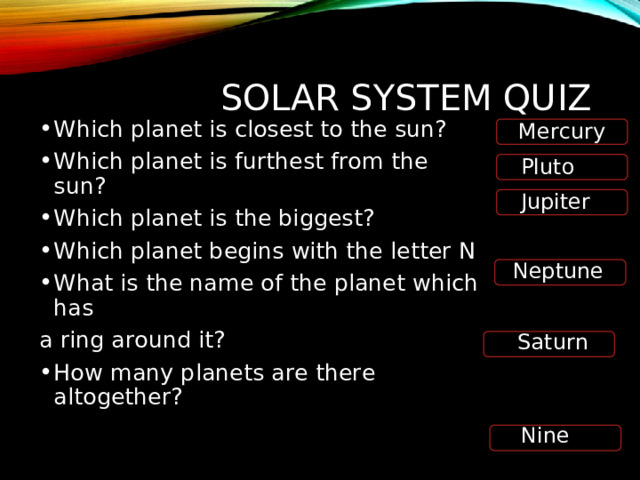
SOLAR SYSTEM QUIZ
Mercury
- Which planet is closest to the sun?
- Which planet is furthest from the sun?
- Which planet is the biggest?
- Which planet begins with the letter N
- What is the name of the planet which has
a ring around it?
- How many planets are there altogether?
Pluto
Jupiter
Neptune
Saturn
Nine
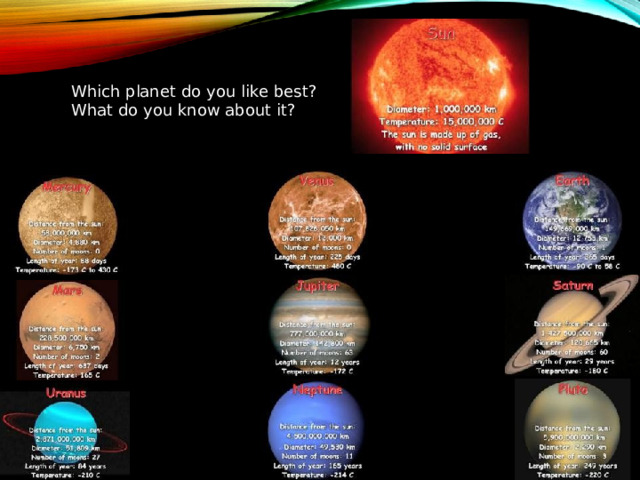
Which planet do you like best? What do you know about it?
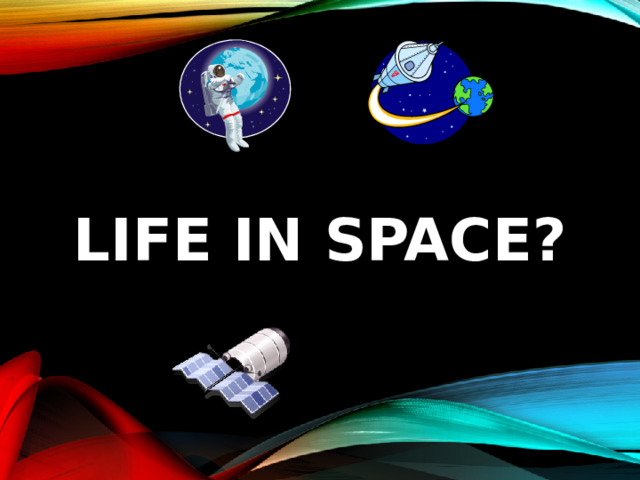
LIFE IN SPACE?
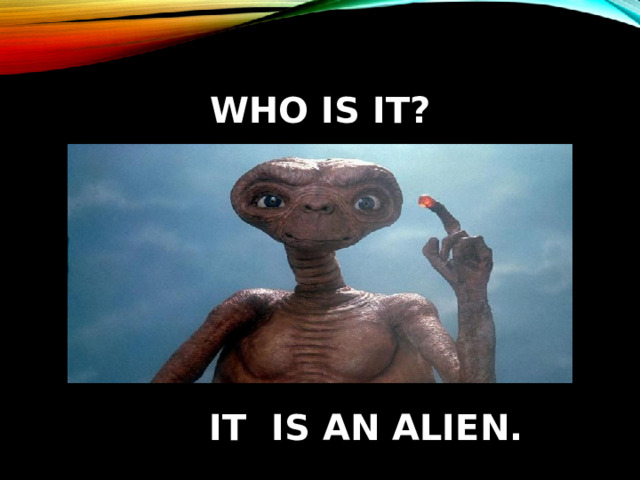
WHO IS IT?
IT IS AN ALIEN.
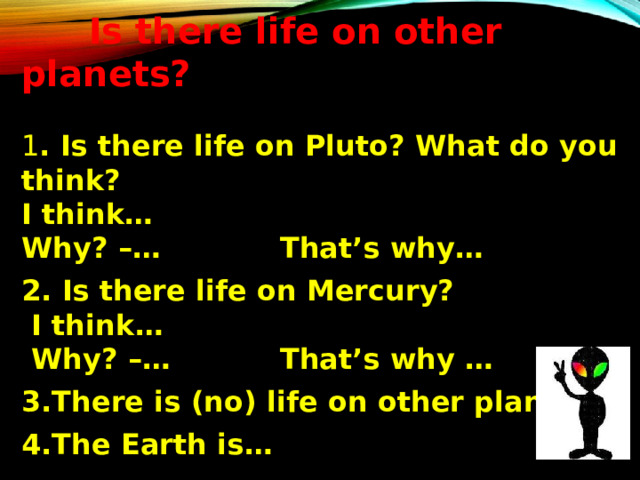
Is there life on other planets?
1 . Is there life on Pluto? What do you think?
I think …
Why? – … That’s why …
2. Is there life on Mercury?
I think …
Why? – … That’s why …
3.There is ( no ) life on other planets.
4.The Earth is …
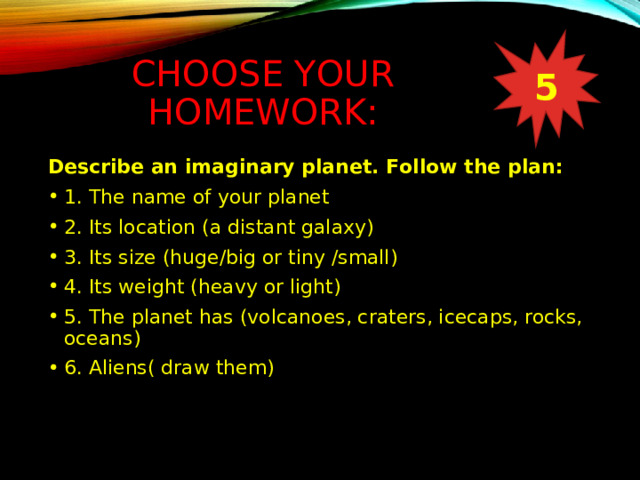
CHOOSE YOUR HOMEWORK:
5
Describe an imaginary planet. Follow the plan:
- 1. The name of your planet
- 2. Its location (a distant galaxy)
- 3. Its size (huge/big or tiny /small)
- 4. Its weight (heavy or light)
- 5. The planet has (volcanoes, craters, icecaps, rocks, oceans)
- 6. Aliens( draw them)
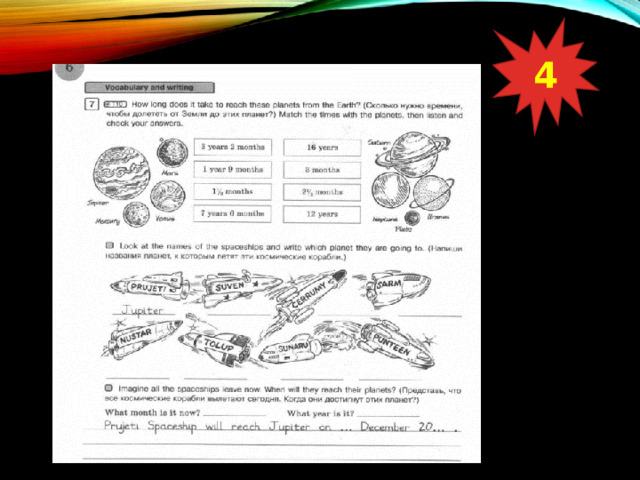
4
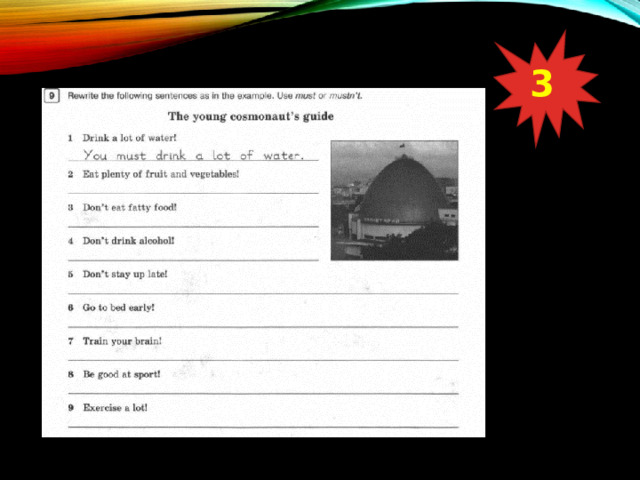
3
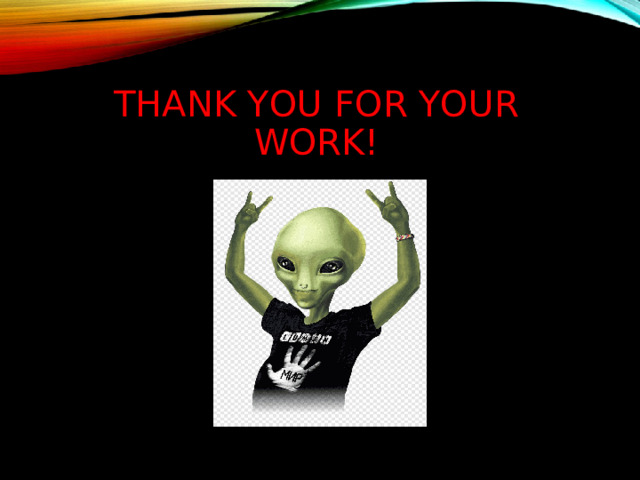
THANK YOU FOR YOUR WORK!

 Получите свидетельство
Получите свидетельство Вход
Вход



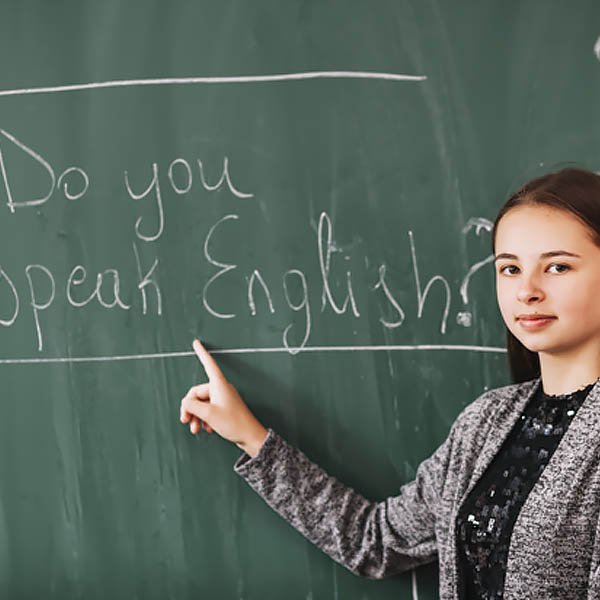
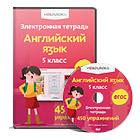

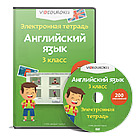
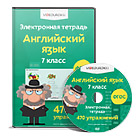
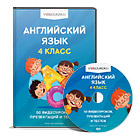

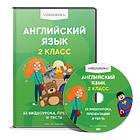

 Презентация к уроку английского языка в 5 классе по теме "Солнечная система" (4.31 MB)
Презентация к уроку английского языка в 5 классе по теме "Солнечная система" (4.31 MB)
 0
0 242
242 13
13 Нравится
0
Нравится
0


